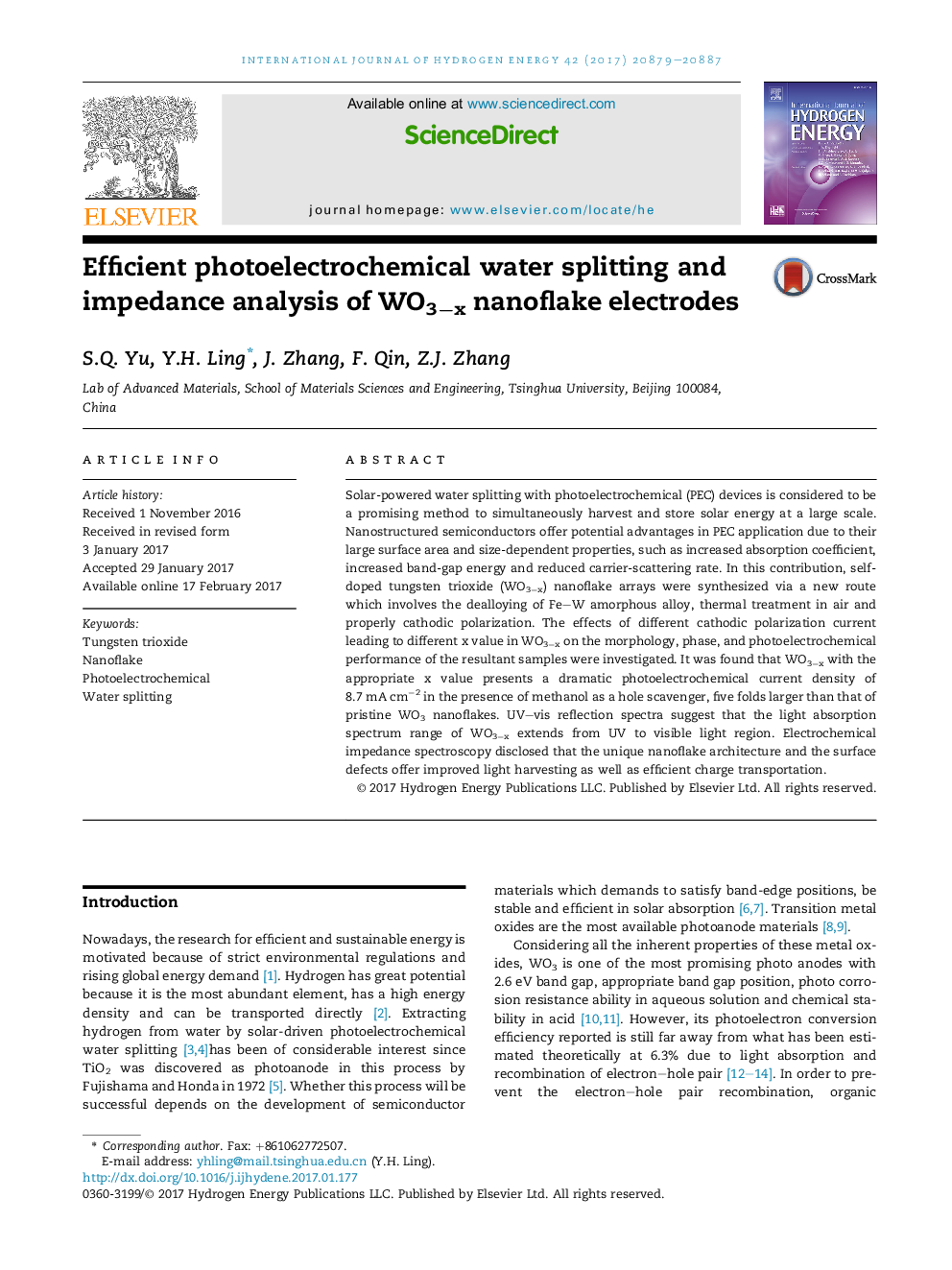| Article ID | Journal | Published Year | Pages | File Type |
|---|---|---|---|---|
| 5146298 | International Journal of Hydrogen Energy | 2017 | 9 Pages |
Abstract
Solar-powered water splitting with photoelectrochemical (PEC) devices is considered to be a promising method to simultaneously harvest and store solar energy at a large scale. Nanostructured semiconductors offer potential advantages in PEC application due to their large surface area and size-dependent properties, such as increased absorption coefficient, increased band-gap energy and reduced carrier-scattering rate. In this contribution, self-doped tungsten trioxide (WO3âx) nanoflake arrays were synthesized via a new route which involves the dealloying of Fe-W amorphous alloy, thermal treatment in air and properly cathodic polarization. The effects of different cathodic polarization current leading to different x value in WO3âx on the morphology, phase, and photoelectrochemical performance of the resultant samples were investigated. It was found that WO3âx with the appropriate x value presents a dramatic photoelectrochemical current density of 8.7Â mAÂ cmâ2 in the presence of methanol as a hole scavenger, five folds larger than that of pristine WO3 nanoflakes. UV-vis reflection spectra suggest that the light absorption spectrum range of WO3âx extends from UV to visible light region. Electrochemical impedance spectroscopy disclosed that the unique nanoflake architecture and the surface defects offer improved light harvesting as well as efficient charge transportation.
Related Topics
Physical Sciences and Engineering
Chemistry
Electrochemistry
Authors
S.Q. Yu, Y.H. Ling, J. Zhang, F. Qin, Z.J. Zhang,
